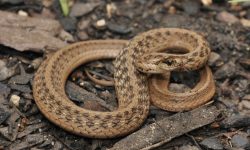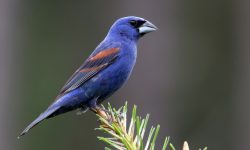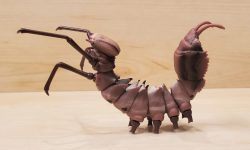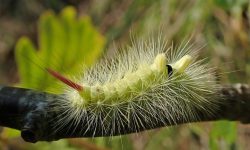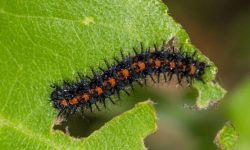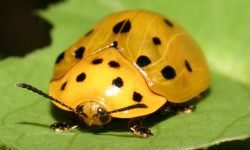Florida is home to a vibrant array of red birds that add splashes of color to its diverse landscapes. Among the 10 beautiful Florida red birds, the Northern Cardinal stands out with its striking red plumage and distinctive crest. The Scarlet Tanager, with its bright red breeding plumage, is another eye-catching species.
The Vermilion Flycatcher, a small bird with a vivid red head and breast, adds a touch of elegance. Additionally, the Roseate Spoonbill, known for its rosy hue, graces Florida’s wetlands. These red-feathered inhabitants contribute to the state’s rich avian tapestry, making birdwatching a delightful experience for enthusiasts.
Different Types of Florida Red Birds
Scarlet Tanager
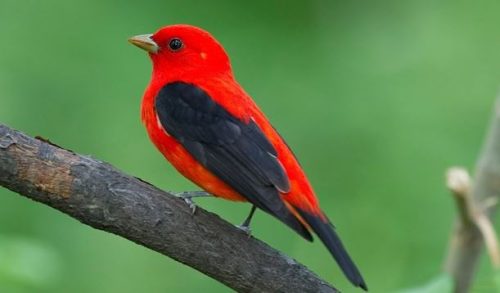
Throughout the eastern United States, there is a visually arresting bird known as the Scarlet Tanager (Piranga olivacea). Males are 6-7 inches long and have a wingspan of 9.8–11.4 inches. During breeding, they have bright red plumage with black wings and tails, and during non-breeding, their coloration changes to olive-yellow. The females have dark olive-green wings and tails, although they still look like non-breeding males.
These elusive birds, which have dark gray legs and feet and short, robust beak, live in lush woodlands and are threatened by habitat fragmentation. Their main food sources are insects and fruits. They migrate frequently through Florida, showing up in different parts of the state and along the shore.
Purple Finch
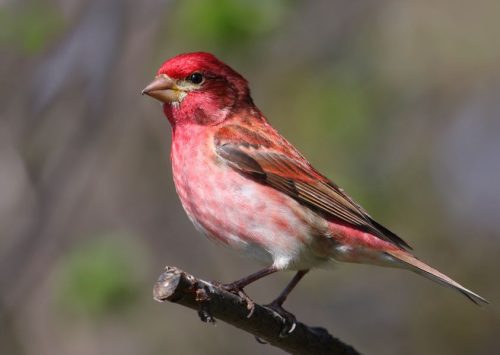
Similar to a sparrow, the Purple Finch (Haemorhous purpureus) is a tiny bird that can be found in North America. Males are 5-7 inches long and have a wingspan of 8.7–10.2 inches. They have brown wings and a tail, while their head, breast, and back are colored raspberry red. The breasts and belly of females show noticeable streaking, and their overall tone is brownish-gray. These birds, which have brownish-gray legs and short beak, are unique to the eastern United States for the winter.
Confusion may arise since House Finch’s spread during the 1950s is associated with a drop in population. Even though they favor suburban settings with lots of trees, you can effectively attract them by planting seeds in your garden. Purple finches can be observed further north in Florida in the winter.
House Finch

Small birds, measuring 5–6 inches in length and 7.9–9.8 inches in width at the wings, are house finches (Haemorhous mexicanus). While females are grayish-brown with extensive striping on the breast and belly, males have red on the head, breast, and rump, and brown streaks on the back and wings. They have grayish-brown legs and feet that mirror the color of their small, conical bills.
These finches are native to North America and were first seen in the western states before moving east. House Finches are common in parks and gardens, as well as residential, suburban, and urban environments. Their main food sources are seeds and fruits. They live all year round in Florida, but primarily in the northern parts of the state.
These endearing birds are well-liked by birdwatchers and are frequently seen in gardens and at bird feeders. However, because female finches in the area can resemble each other, it can be difficult to distinguish between them.
Vermilion Flycatcher
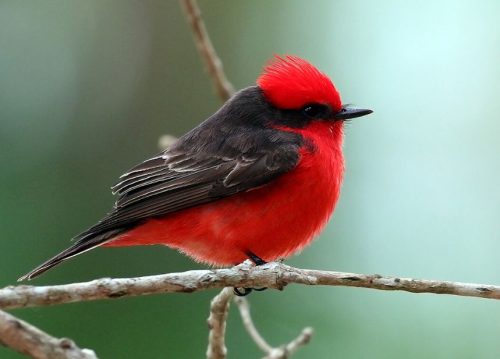
The Vermilion Flycatcher, or Pyrocephalus rubinus, is a little, eye-catching bird that is approximately 5.5 inches long. The males have a bright red head, throat, and breast, and the females have a more muted brownish head and white breast with a brownish-gray back and wings.
These birds are widespread in the southern United States, Mexico, and South America; they like wide-open spaces with sporadic grasses, trees, and shrubs. They eat mostly insects, although they especially favor flying insects that they catch in midair, such as dragonflies and flies.
Vermilion Flycatchers can be seen in Florida during the winter months in the state’s south and west coast. Look for these colorful birds sitting on fence posts or low trees, eagerly anticipating their next meal in the air.
American Robin
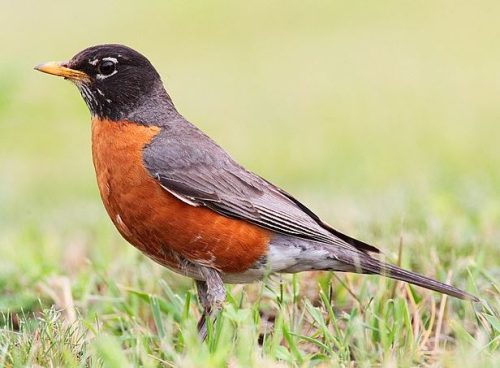
The size of the American Robin (Turdus migratorius) is medium; it measures 8–11 inches in length and has 12–16 inches of wingspan. With a white underbelly and a characteristic rusty-red breast, its overall color is grayish-brown. This rusty-red characteristic is shared by both sexes.
From Alaska to Mexico, the American Robin is a well-known species throughout all of North America. It lives well in a variety of settings, including farms, forests, parks, and suburban areas. These birds, which mostly eat insects, earthworms, and berries, are frequently seen foraging on lawns and in garden spaces. They build nests in trees or shrubs and lay pale blue eggs throughout the breeding season.
American Robins, despite their name, are members of the thrush family and are not closely related to European robins. During the migration season, they are a common sight in Florida, and in the northern parts of the state, they can be seen all year round.
Painted Bunting
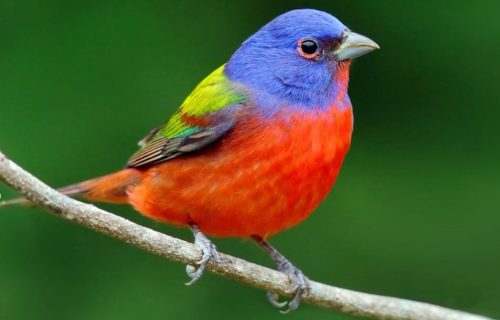
The Painted Bunting (Passerina ciris) is a tiny, perhaps 5–6 inch long bird with vivid colors. While females are duller, they have a greenish-yellow head and back as well as a yellowish belly. Males have bright colors, such as a blue head, green back, and red belly.
Males have distinct patterns or colors, such as a vivid red rump and a red ring patch around their eyes. Their legs and feet have a grayish or flesh-colored hue, and their bills are small and conical in shape.
Painted Buntings are native to Mexico, Central America, and the southern United States. They like locations with plenty of bushes, like hedgerows, brushy areas, and the edges of woodlands. They are mostly seed eaters, but in the breeding season, they also eat insects.
These birds migrate through Florida, and from December to March, you can see them all around the state, but especially in the lowcountry. Some may spend the winter near Florida’s coast while migrating further south. For any birdwatcher, spotting a Painted Bunting is a delight, and they are undoubtedly a species worth hunting out.
Northern Cardinal
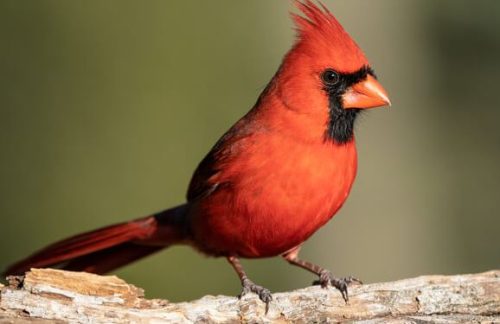
With a wingspan of 10–12 inches and a body length of 8–9 inches, the Northern Cardinal (Cardinalis cardinalis) is a bird that is frequently sighted in the central and eastern regions of the United States. While females are primarily pale brown with a crimson tinge to their wings and tail, males are bright red with a black mask around their eyes and a short crest.
Both sexes have strong, pointed claws for perching on branches and twigs, and they have grayish-brown legs with a large, brilliant orange beak. Cardinals prefer locations with lots of bushes close to water sources, as well as open forests and shrublands.
In territorial fights and even attacking reflections in windows or mirrors, male Northern Cardinals fiercely protect their area during breeding season. They eat many different things, such as fruits, seeds, and insects.
In Florida, these birds are year-round observers and are frequently spotted in parks, residential areas, and bird feeders.
Roseate Spoonbill
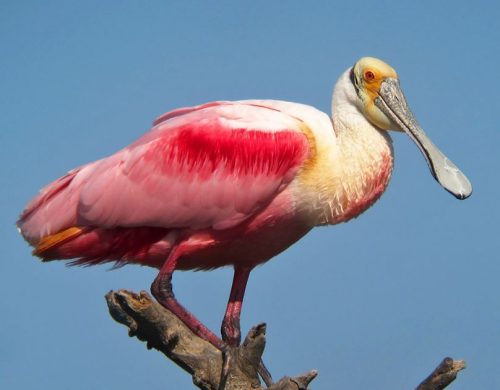
Known by many as the “Flame bird,” the Roseate Spoonbill (Platalea ajaja) is a unique and fascinating bird that lives in marshes across North and South America, including Florida. Its bright pink feathers with a white underbelly measure 27.9-33.9 inches in length and 47.2-51.2 inches in wingspan. This bird, which feeds on fish, insects, and crustaceans in marshes, swamps, and mangroves, is a sight to behold. It has ruby red eyes, a spoon-shaped bill, and a bald patch around its eyes that is yellowish-green in color.
Their pink feathers become more intense during the breeding season, producing an amazing show. Throughout the year, they can be seen in southern Florida; in particular, during the winter, they gather in big flocks in coastal marshes. It is strongly advised for birdwatchers looking to witness this amazing species to travel to Florida’s southern coastal region.
Summer Tanager
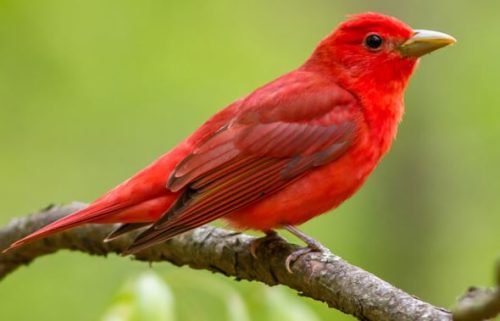
Measuring 7-8 inches in length, the Summer Tanager (Piranga rubra) is an amazing bird that may be found in the Southeast of the United States. Because it’s the only bird in North America with brilliant red plumage, males may be easily distinguished from females. Although they are not as ostentatious, females have an olive or yellowish-olive complexion. These birds are common in parks with big trees, open forests, and forest margins. They frequently sit on treetops.
Summer Tanagers mostly eat insects and fruit, but they are also excellent at capturing wasps and flying bees. If you live in Florida, you can see them from April through October. During breeding season, sightings are most common in the northern portion of the state. They are more common in Florida’s southernmost regions during the migration season.
Red-headed Woodpecker
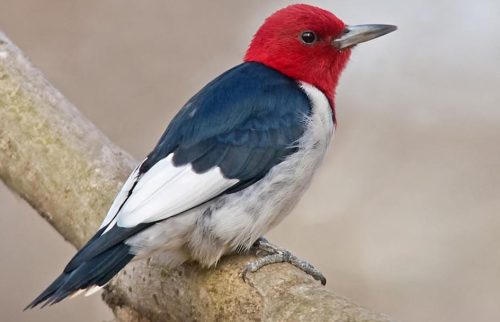
The Red-headed Woodpecker (Melanerpes erythrocephalus) stands out with its striking features, including a bright red head, neck, and throat, contrasting with a white underside, black tail, and black upper side with large white wing patches and a white rump. They can be found in various habitats such as open forests, plantations, dead tree groves, river bottoms, and agricultural lands.
Feeding on nuts, fruits, berries, seeds, insects, and occasionally small birds, rodents, and eggs, they are year-round residents in the eastern United States, including Florida. However, they are generally nomadic, migrating south for winter after spending summers in the northern-central United States and southern Canada.
People Who Read This Also Read:

